| Listing 1 - 10 of 124 | << page >> |
Sort by
|
Dissertation
ISBN: 9789058676986 Year: 2008 Publisher: Leuven Leuven University Press
Abstract | Keywords | Export | Availability | Bookmark
 Loading...
Loading...Choose an application
- Reference Manager
- EndNote
- RefWorks (Direct export to RefWorks)
Epidemiological features of IE may have changed during the last decades because of an increase in degenerative valvular disease in elderly, placement of prosthetic valves and exposure to invasive procedures and nosocomial bacteremia. IE remains associated with an unfavorable prognosis despite progress in diagnostic and therapeutic accuracy in recent years. Almost half of IE episodes experience at least one complication and the overall mortality remains as high as 20-25% nowadays. For this doctoral thesis, we studied data of patients with definite IE according to the modified Duke criteria, registered in a prospectively collected database since June 2000. All patients were treated according to the AHA guidelines and predefined criteria for surgical intervention. We aimed to document changing trends in the epidemiology and microbiology of IE and investigated predictors of 6-month mortality in patients with IE in the new era. We further analyzed clinical characteristics and outcome of subgroups of IE patients, in particular, PVE patients, S. aureus IE patients and surgically treated IE patients. We also examined risk factors for development of SAIE in patients with SAB. Furthermore, we evaluated the value of TEE for detecting cardiac abscess and predicting embolism. Since we observed a high rate of nosocomial IE, we evaluated if the traditional definition of nosocomial IE should be extended up to 6 months after discharge. Using propensity score analysis, we studied the optimal management and outcome of left-sided IE. Finally, we explored whether a PET/CT scan detects early or clinically occult embolism and metastatic infection. In a first study (chapter II), we assessed changing trends in the epidemiology and microbiology of IE in the new millennium and identified predictors of 6-month mortality. We found that S. aureus has emerged as the most frequent micro-organism causing IE, compared to older series. We observed a high number of patients with PVE, nosocomial IE and S. aureus IE, all associated with a worse prognosis compared to NVE, community-acquired IE and non-S. aureus IE, respectively. These data explain why despite diagnostic and therapeutic progress, still more than one fifth of IE patients die. We were the first to divide the medical therapy group into 2 subgroups: medical therapy due to a contraindication to surgery (perforce medical) and medical therapy without a contraindication to surgery (deliberate medical). A limitation of previous studies was that patients with a contraindication to cardiac surgery remained in the medical group, distorting the results towards an unfavorable outcome. We found that the majority of patients receiving medical therapy only due to a contraindication to surgery died. These patients were most frequently elderly patients for whom valve surgery was no therapeutic option due to comorbid conditions or previous technically difficult cardiac procedures. This finding may be another reason for a persisting high mortality rate in our recent series. We found that the survival rate of surgically treated patients and medically treated patients without a contraindication to surgery was beneficial and not statistically significantly different. These data suggest that in a subgroup of patients there remains a role of antimicrobial therapy only to eradicate IE. The second study (chapter III) originated from the first study, based on the observation of a high complication rate in IE patients. We focused on abscess formation in this study and aimed to investigate the value of TEE for detecting cardiac abscess in IE patients and to evaluate the impact of an overlooked abscess on 6-month mortality. We were the first to include only surgically treated IE patients to study this subject. We found that there was a considerable underestimation of abscess detection by TEE. The specificity of TEE for abscess detection was very high, but the sensitivity was low. Our results indicate that TEE diagnosis of abscess remains difficult, especially when abscesses are localized on a native mitral valve with calcification in the posterior mitral valve annulus. Patients with abscess formation were more likely to have S. aureus IE and PVE. Patients with a missed abscess, who had a significant longer surgical delay than patients with an echocardiographically detected abscess, showed a nonsignificant trend towards increased mortality. This finding suggests that early diagnosis and surgery may improve outcome in patients with an abscess. Based on findings from the first study, i.e. a high rate of S. aureus IE associated with a high mortality rate, we aimed to identify risk factors for SAIE in patients with SAB in a third study (chapter IV). We observed that an unknown portal of entry, the presence of a valvular prosthesis, persistent fever and persistent bacteremia were independently associated with SAIE in patients with SAB. However, even in the absence of identifiable risk factors, there remained a risk for SAIE. Clinicians should be alert for complications in all patients with SAB and therefore a TEE is recommended in all patients with SAB to exclude SAIE. The fourth study (chapter V) also originated from the first study, based on the observation of a high complication rate in IE patients. We focused on embolism in this study and aimed to investigate if there is an association between embolism and clinical and TEE characteristics in patients with IE and to examine the influence of embolism and TEE characteristics on 6-month mortality. We found that any embolism occurred in over a fourth of patients, but we could not confirm the previously reported higher incidence of embolism in mitral valve anterior leaflet IE. The present study found an association between any embolism and the infecting micro-organism, in particular, S. aureus, CoNS and non-viridans streptococci. Our data support evidence that TEE characteristics are associated with new embolism during antimicrobial therapy; particularly, vegetation length >10 mm tended to be associated with new embolism and vegetation mobility showed a significant association with new embolism. Vegetation size >10 mm was independently associated with 6-month mortality. Multiple emboli showed a trend towards association with death. In fact, embolism may be considered as a prognostic marker of overall severity of illness. However, the prognosis in survivors after any embolism was favorable, namely, 88% achieved full recovery. In the first study we observed a high rate of patients with PVE. The fifth study (chapter VI) was designed to describe the profile and outcome of patients with PVE and to examine whether valve surgery is the most beneficial treatment in PVE patients. The present study is the first to analyse the outcome of surgically versus deliberately medically treated PVE patients. We found that staphylococci were the most frequent causative micro-organisms. Almost half of patients underwent cardiac surgery, mainly those with major complicated PVE. One third of patients with an uncomplicated course were treated deliberately medically and one fifth underwent perforce medical treatment. Our results suggest that there remains a role for watchful waiting after institution of antibiotics in patients with PVE and no evidence of major complications. Moreover, our findings support that patients with uncomplicated S. aureus PVE can be treated successfully without cardiac surgery. We underscore that patients with major complicated PVE should undoubtedly undergo surgery since most patients receiving perforce medical treatment died. In the first study we observed a high rate of surgically treated IE patients. We investigated the profile and outcome of patients requiring cardiac surgery and studied the impact of timing of surgery on 6-month mortality in the sixth study (chapter VII). We were the first to define early surgery as surgery performed within the first 7 days after diagnosis of IE. The definition of early surgery in previous studies varied from “valve replacement during the course of antimicrobial therapy” to “surgery during the initial hospitalization for IE”. The clinical profile of patients requiring cardiac surgery within the first week of antimicrobial therapy probably differs from patients in whom surgery was performed in the last week before the end of antimicrobial therapy. We found that nearly two third of patients were operated early. When we evaluated the impact of timing of cardiac surgery on 6-month mortality, we found a nearly significant association, univariately. The prognosis in patients who were operated late (more than 7 days after diagnosis of IE) was favorable (a four fold lower mortality rate) compared to patients receiving early surgery. Likely, this difference was not due to the timing of cardiac surgery itself, but due to the severity of the disease. Studying predictors of death in surgically treated patients, we found that septic shock was an independent risk factor for 6-month mortality. Patients experiencing preoperative septic shock had a very high mortality rate despite the performance of early cardiac surgery. Furthermore, we observed that no patients with the indication to surgery “severe regurgitation without heart failure” died. This observation may suggest that early surgery in these patients may be beneficial because the length of hospitalization may be reduced and because of prevention of new heart failure during hospitalization. In the seventh study (chapter VIII) we evaluated patients with S. aureus IE since the first study showed that S. aureus was a predominant and aggressive micro-organism. We aimed to differentiate the clinical profile between MSSA and MRSA IE patients. We observed that nearly one fourth of S. aureus were methicillin-resistant. MRSA should be suspected in patients with a nosocomial origin of IE, in patients who underwent surgery in the preceding 6 months, who had a catheter or a surgical site infection. In this setting, empirical treatment with antimicrobials active against MRSA should be initiated. A trend towards higher mortality was found in patients with MRSA compared to MSSA. The highest mortality rate was observed in nosocomial MRSA patients. The most favorable outcome in MSSA patients was registered in association with deliberate medical therapy, suggesting that, despite S. aureus is known as a destructive micro-organism, there exists a role for watchful waiting with antimicrobials only. In patients with MRSA, the outcome was most beneficial in association with surgical therapy. In the first study, we observed a high rate of patients with a nosocomial origin of IE. Therefore, we aimed to explore whether the traditional definition of nosocomial IE should be extended to 6 months after discharge in the eighth study (chapter IX). We observed a high rate of hospital pathogens, such as CoNS, and a low rate of community pathogens, such as viridans streptococci, causing IE up to 6 months after an invasive procedure during hospitalization. Therefore, we propose to reclassify the definition of nosocomial IE into early (IE occurring more than 72 hours after admission to the hospital or within 8 weeks after a significant invasive procedure performed during hospitalization) and late nosocomial IE (IE occurring between 8 weeks and 6 months after a significant invasive procedure performed during hospitalization). A therapeutic consequence of this new definition implies that in patients with suspected late nosocomial IE, initial therapy should include antimicrobial agents active against CoNS, irrespective of prosthetic or native valve IE. In the nineth study (chapter X), we evaluated the impact of management on outcome in left-sided IE patients, using propensity score analysis. The present study is the first propensity score analysis to examine the impact of left-sided IE management on 6-month mortality, by dividing the type of treatment into 3 subgroups. This study was performed to resolve conflicting data in the literature about the impact of valve surgery on mortality in IE. In this study, we controlled for confounding treatment bias between the 3 therapy groups by assigning propensity scores to all patients. Subsequently we applied the propensity score for stratification (method 1) and regression (covariance) adjustment (method 2). In method 1, in the combined medical-surgical group, the mortality rate decreased with an increasing propensity score, suggesting that the greatest reduction of mortality was associated with the highest propensity for surgery (quintile 5). Moreover, with an increasing propensity score to undergo surgery, there was no evidence for a higher operative risk to die. Contrary, in the deliberate medical group, the mortality rate increased with an increasing propensity score, concluding that the benefit of deliberate medical treatment was the highest in patients with the lowest propensity for surgery (quintile 1). The higher the propensity to undergo surgery, the higher the risk for mortality if an operation was not performed. In method 2, the multivariable logistic regression analysis identified predictors of death, including septic shock during hospitalization, cardiogenic shock during hospitalization, the presence of an abscess and perforce medical treatment. Deliberate medical treatment and combined medical-surgical treatment showed a significant survival benefit compared to perforce medical treatment. In a pairwise comparison, combined medical-surgical treatment was not associated with a significant better survival than deliberate medical therapy. There remains a role for watchful waiting with antimicrobials only in the subgroup of patients with low to moderate propensity for surgery. Based on data of the fourth study, we initiated a prospective tenth study (chapter XI) to determine whether a PET/CT scan detects early or clinically occult embolism and metastatic infection. This study is the first to investigate a possible role of a PET/CT scan in patients with IE. We conclude that a PET/CT scan may be an important diagnostic tool for tracing peripheral embolization and metastatic infection in patients with IE, since nearly one third of episodes had a clinically occult focus on PET/CT scan. The PET/CT scan findings may have therapeutic implications such as reconsidering indications for surgery when detecting occult embolism and eradicating secondary foci preoperatively to prevent seeding from the metastatic focus postoperatively. In summary, this doctoral thesis identified several parameters associated with a complicated disease course and outcome in patients with IE. S. aureus has become the most frequent micro-organism causing IE and is associated with the worst prognosis compared to other pathogens. However, not all patients with S. aureus IE should undergo valvular surgery to eradicate IE. In the propensity score analysis, the higher the propensity to undergo surgery, the higher the risk for mortality if an operation was not performed. Data from this propensity score study support evidence to current guidelines for surgical intervention. De epidemiologie van IE is de voorbije decennia gewijzigd door een toename van degeneratief kleplijden bij oudere patiënten, kunstklepimplantatie en blootstelling aan invasieve procedures en nosocomiale bacteriëmie. IE gaat nog steeds gepaard met een ongunstige prognose ondanks vooruitgang in diagnostische en therapeutische aanpak. Bijna de helft van de IE patiënten maakt ten minste één complicatie door en de mortaliteit blijft tot op heden aanzienlijk hoog (20 à 25%). Voor dit doctoraal proefschrift bestudeerden we data van patiënten met definitieve IE volgens de gewijzigde Duke criteria. Patiëntengegevens werden geregistreerd in een prospectief gecollecteerde databank vanaf juni 2000. Alle patiënten werden behandeld volgens de AHA richtlijnen en voorafbepaalde criteria voor heelkundige interventie. We onderzochten evolutieve veranderingen in de epidemiologie en microbiologie van IE patiënten en identificeerden predictoren voor 6-maanden mortaliteit in het nieuwe millennium. Verder analyseerden we klinische kenmerken en outcome van verschillende subgroepen van IE patiënten, namelijk, kunstklependocarditis, S. aureus IE en heelkundig behandelde patiënten. We onderzochten ook risicofactoren voor het ontwikkelen van S. aureus IE bij patiënten met S. aureus bacteriëmie. Verder evalueerden we de waarde van TEE voor de detectie van een cardiaal abces en voor het voorspellen van embolisatie. Aangezien we een hoog aantal nosocomiale IE observeerden, onderzochten we of de traditionele definitie van nosocomiale IE zou moeten uitgebreid worden naar 6 maanden na ontslag. Met behulp van propensity score analyse, bestudeerden we het optimale behandelingsbeleid en outcome van linkszijdige IE. Tenslotte gingen we na of een PET/CT scan vroegtijdige klinisch occulte embolisatie en metastatische infectie kan opsporen. In de eerste studie (hoofdstuk II) onderzochten we trends in de epidemiologie
Academic collection --- 61 --- Geneeskunde. Hygiëne. Farmacie --- Theses
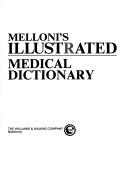
ISBN: 0683026429 Year: 1979 Publisher: Baltimore Williams and Wilkins
Abstract | Keywords | Export | Availability | Bookmark
 Loading...
Loading...Choose an application
- Reference Manager
- EndNote
- RefWorks (Direct export to RefWorks)
61 <031> --- 03:61 --- 61 --- Geneeskunde. Hygiëne. Farmacie--Encyclopedieën. Lexica --- Encyclopedieën. Naslagwerken--(Algemene)-:-Geneeskunde. Hygiëne. Farmacie --- Geneeskunde. Hygiëne. Farmacie --- Medicine --- Dictionaries. --- 03:61 Encyclopedieën. Naslagwerken--(Algemene)-:-Geneeskunde. Hygiëne. Farmacie --- Dictionaries --- Health Workforce
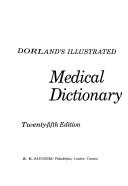
ISBN: 0721631487 Year: 1974 Publisher: Philadelphia (Pa.): Saunders
Abstract | Keywords | Export | Availability | Bookmark
 Loading...
Loading...Choose an application
- Reference Manager
- EndNote
- RefWorks (Direct export to RefWorks)
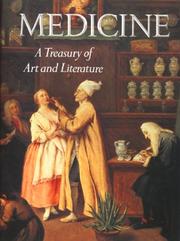
ISBN: 0883639742 Year: 1991 Publisher: New York (N.Y.): Hugh Lauter Levin
Abstract | Keywords | Export | Availability | Bookmark
 Loading...
Loading...Choose an application
- Reference Manager
- EndNote
- RefWorks (Direct export to RefWorks)
61 --- 769.04:61 --- 769.04:61 Prentenverzamelingen in de grafische kunsten. Iconografie. Iconologie-:-Geneeskunde. Hygiëne. Farmacie --- Prentenverzamelingen in de grafische kunsten. Iconografie. Iconologie-:-Geneeskunde. Hygiëne. Farmacie --- Geneeskunde. Hygiëne. Farmacie --- Human medicine --- Art --- Thematology
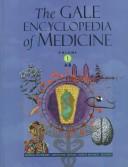
ISBN: 0787618683 9780787618681 Year: 1999 Publisher: Detroit Gale
Abstract | Keywords | Export | Availability | Bookmark
 Loading...
Loading...Choose an application
- Reference Manager
- EndNote
- RefWorks (Direct export to RefWorks)
"An advisory board of physicians and librarians worked with health-care professionals and medical writers to compile this encyclopedia. The 1,500 alphabetical entries cover 905 disorders and conditions, 235 tests and procedures, and 325 treatments and therapies (including drugs and alternative treatments). The signed entries are one to three pages long and include shaded boxes with definitions of key terms, brief bibliographies, and lists of organizations for referral. Black-and-white photographs, line drawings, and charts augment the text. This encyclopedia bridges the gap between basic consumer sources and specialized medical texts."--"Outstanding reference sources 2000", American Libraries, May 2000. Comp. by the Reference Sources Committee, RUSA, ALA.
Internal medicine --- 61 <03> --- Internal medicine. --- Medicine, Internal --- Medicine --- Geneeskunde. Hygiëne. Farmacie--Naslagwerken. Referentiewerken --- Internal Medicine
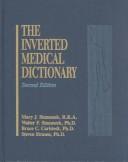
ISBN: 0877628254 Year: 1991 Publisher: Basel Technomic
Abstract | Keywords | Export | Availability | Bookmark
 Loading...
Loading...Choose an application
- Reference Manager
- EndNote
- RefWorks (Direct export to RefWorks)
Book
ISBN: 0712308377 Year: 1996 Publisher: London British Library board
Abstract | Keywords | Export | Availability | Bookmark
 Loading...
Loading...Choose an application
- Reference Manager
- EndNote
- RefWorks (Direct export to RefWorks)
Book
ISBN: 1536155780 9781536155785 9781536155778 1536155772 Year: 2019 Publisher: New York : Nova Science Publishers,
Abstract | Keywords | Export | Availability | Bookmark
 Loading...
Loading...Choose an application
- Reference Manager
- EndNote
- RefWorks (Direct export to RefWorks)
"By the last 3 decades, consistent scientific research has proved that the spiritual-religious dimension is strongly related to human health. Since then, this field and its applications are progressively growing and developing, through: psycho-neuro-immunological-endocrine research; curricular disciplines on medical schools; the bio-psycho-social-spiritual approach as standard for patient-centered integrative healthcare; complementary therapies derived from spiritual traditions became valuable allies; hospitals developing policies to respect spiritual values and necessities; faith-based interventions cooperating with psychosocial initiatives. Each of these movements meets the patients' demands for a comprehensive healthcare with a human approach. However, most healthcare professionals were not educated within the view derived from recent research associating religiosity and health. At the other hand, clergymen tend to receive little or none information about health issues during their theological graduation. Notwithstanding progress in including the religious dimension in the clinical context, there are still many significant obstacles for a real transformation. In this context, "An Examination of Religiosity - Influences, Perspectives and Health Implications" aspires to disseminate the ideal form of clinical healthcare, based on the best available scientific evidence. This work does not have the goal of being exhaustive, but rather aims to be a reliable reference to accompany a paradigm shift. The chapters are original manuscripts of high-standard methodological quality, selected among authors from Austria, Brazil, Egypt, Poland, and the United States. The book starts with a historical trajectory and the current state-of-the-art of spirituality-religiosity as a clinical therapeutic resource. The following chapters explore the relationships between spirituality and religiosity in the areas of physical and mental health in many populations and groups: the general population, college students, older adults, cancer patients, and bereaved parents. The final chapters bring intriguing and challenging models about phenomena involving the nonlocal mind and the brain-independent consciousness"--
Psychology and religion. --- Religion and psychology --- Religion --- Psychology and religion --- Spirituality --- 241:61 --- 241.63*5 --- 241.63*5 Theologische ethiek: bio-ethiek (bioethiek); genetische experimenten; transplantatie; eugenetica --- Theologische ethiek: bio-ethiek (bioethiek); genetische experimenten; transplantatie; eugenetica --- 241:61 Moraaltheologie. Theologische ethiek-:-Geneeskunde. Hygiëne. Farmacie --- 241:61 Theologie morale. Ethique theologique-:-Geneeskunde. Hygiëne. Farmacie --- Moraaltheologie. Theologische ethiek-:-Geneeskunde. Hygiëne. Farmacie --- Theologie morale. Ethique theologique-:-Geneeskunde. Hygiëne. Farmacie --- Spiritual-mindedness --- Philosophy --- Spiritual life --- Health aspects
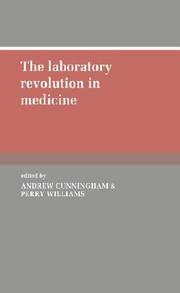
ISBN: 0521404843 Year: 1992 Publisher: Cambridge Cambridge University press
Abstract | Keywords | Export | Availability | Bookmark
 Loading...
Loading...Choose an application
- Reference Manager
- EndNote
- RefWorks (Direct export to RefWorks)
378.4:61 --- Diagnosis, Laboratory --- -Medicine --- -Clinical sciences --- Medical profession --- Human biology --- Life sciences --- Medical sciences --- Pathology --- Physicians --- Clinical medicine --- Clinical pathology --- Diagnostic laboratory tests --- Laboratory diagnosis --- Laboratory medicine --- Medical laboratory diagnosis --- Diagnosis --- Universiteiten-:-Geneeskunde. Hygiëne. Farmacie --- History --- -Research --- -History --- -378.4:61 --- -Universiteiten-:-Geneeskunde. Hygiëne. Farmacie --- 378.4:61 Universiteiten-:-Geneeskunde. Hygiëne. Farmacie --- -Diagnosis, Laboratory --- Medicine --- Clinical sciences --- Research --- Diagnosis [Laboratory ] --- 19th century --- Diagnosis, Laboratory - History - 19th century. --- Medicine - Research - History - 19th century. --- Health Workforce
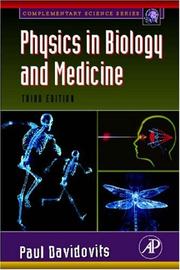
ISBN: 9780123694119 0123694116 Year: 2008 Publisher: Burlington Elsevier Academic Press
Abstract | Keywords | Export | Availability | Bookmark
 Loading...
Loading...Choose an application
- Reference Manager
- EndNote
- RefWorks (Direct export to RefWorks)
General biophysics --- Human medicine --- Biophysics --- Medical physics --- Biophysics. --- Medical physics. --- 57 --- 61 --- Biological sciences in general --- Geneeskunde. Hygiëne. Farmacie --- Biophysique --- Physique médicale
| Listing 1 - 10 of 124 | << page >> |
Sort by
|

 Search
Search Feedback
Feedback About
About Help
Help News
News